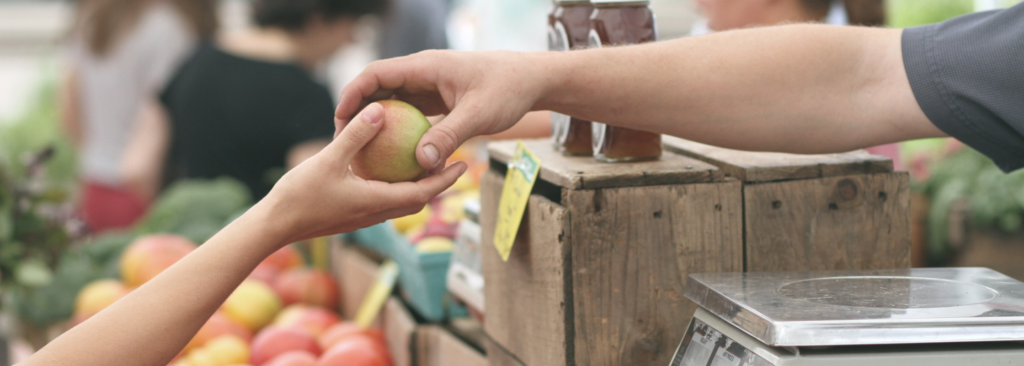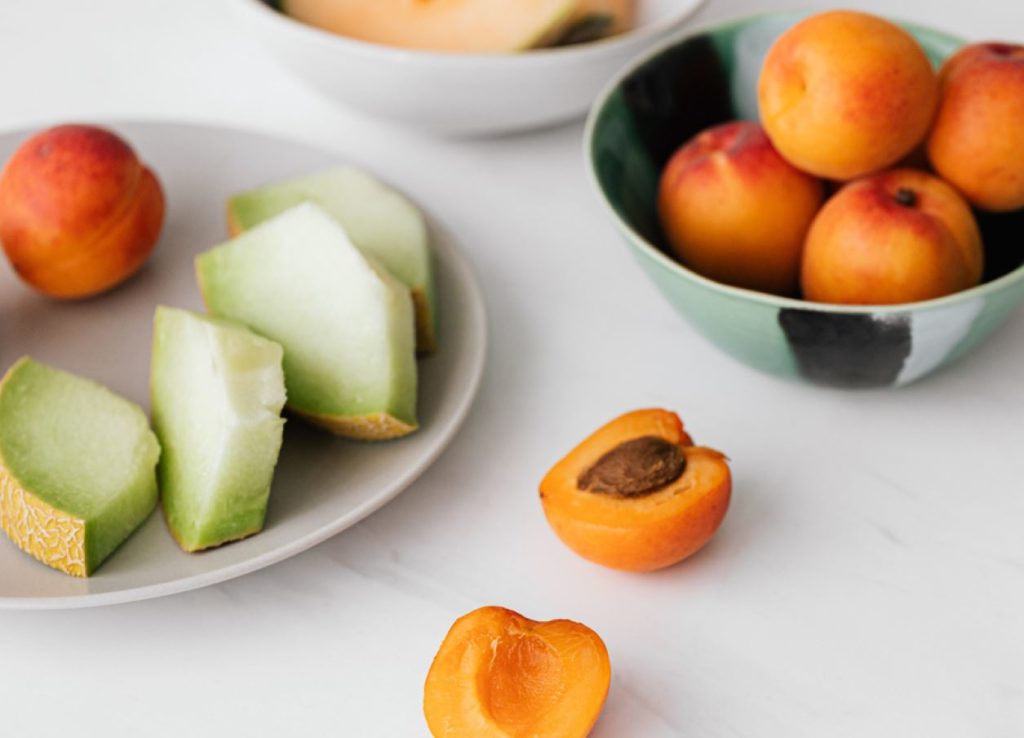When building a nutrient-dense kitchen, what comes to mind? Shopping organic, new kitchen equipment, a pantry clean out… It might sound expensive and maybe a little intimidating.
Don't panic yet - I'm here to help!
We’re going to cover some of the easiest and most affordable steps you can take to begin building your nutrient-dense kitchen. These ideas may seem simple, but I’d really like to encourage you to work on one or two of these suggestions at a time, preferably ones that would be easiest to apply to your life. Once that new habit feels normal and comfortable, then take on the next most attainable tip.
In my experience, I tend to jump in head-first. If you’re like me, you may feel overwhelmed and return to old habits once the initial inspiration wears off. Slowing down to build maintainable habits may take some more time and patience, but it will pay off in the long run when you successfully create a long lasting positive habit, and increase your confidence to build another.
Before we really get into this, let’s take a step back to understand why it’s beneficial to aim toward a nutrient-dense kitchen. This way, when we start to slack on our goal, we have a reason to keep going.
We know that the standard American diet (“SAD”) really isn’t that great, but now, even transitioning away from processed foods isn’t quite enough. You may have heard the phrase “we are what we eat”, and while that is true, a more accurate statement would be “we are what we absorb.”
Because our food has drifted so far from the diet our body was made to eat, our digestive systems struggle to absorb the nutrients that we do consume. The combination of refined sugar, GMO ingredients, additives, inflammatory oils, and nutrient lacking convenience foods have caused a rise in digestive issues, like leaky gut, food intolerances, bloating, SIBO, and intestinal bacterial overgrowth. Although the digestive system isn’t the only thing that’s impacted, it is especially important because it’s where the rest of the body obtains its nutrients. When the digestive system is affected, every other part of the body that depends on it is affected as well.
Not only is the SAD causing us to absorb less nutrients, studies have shown that now even our natural food sources are significantly less nutritious and contain more potentially unsafe substances.

Due to soil depletion, we now have to eat more produce to obtain the same amount of nutrients we would have 70 years ago.
Additionally, these foods have been genetically modified and are covered in chemical fertilizers and pesticides, like glyphosate (RoundUp weedkiller) which is linked to an incredible amount of side-effects and diseases.
The animals from conventional meat and dairy are pumped full of hormones, fed GMO grains (even candy), and kept in unnatural living conditions. If we go by the logic that we are what we eat, we must also consider what the animals we eat consume.
One of the best things we can do to support our digestion, reduce the amount of toxins we’re absorbing, and help our bodies as a whole is by.. you guessed it.. creating a kitchen that contains less toxins and more nutrient-dense food.

Sourcing organic, high-quality, local, & sustainable foods
Why organic?
Organic products tend to be more expensive. Luckily for you, I’ve listed some options below for ways to source more affordable organic foods! Either way, you’re truly getting more bang for your buck. Studies have shown that organic produce and animal products have more nutrients than conventional foods, without the pesticides, chemicals, and hormones. Find more information on food labels that help you choose the best quality products here.
Why local?
Local produce is picked at peak ripeness and not transported long distances. This means the produce is fresher and contains maximum nutrients. Some produce you might find at your local grocery store is picked and shipped before peak ripeness and will not contain as many nutrients. This is the reason why in-season strawberries taste so much better! More nutrients means more flavor!
Why sustainable?
Support the health and wellbeing of the farmers, livestock, and earth that provide our food. Happier animals and plants create more nutritious and better-tasting food as well as a healthier planet.
Now that we understand why it’s so important to eat a nutrient-dense diet, let’s dig into some affordable ways we can make this happen.

1. Farmers markets
Markets are great for sourcing cheaper organic produce since it’s more likely to be grown locally and in-season. I like to go to farmers markets later in the day, because, although they may run out of a few items, some stands will sell what they left at a discounted price to clear out their inventory. Some farmers markets also accept Supplemental Nutrition Assistance Program (“SNAP”, for short) and/or participate in the Farmers Market Nutrition Program.
2. Join a CSA
CSA stands for Community Supported Agriculture. Every CSA is run differently, but typically it’s a subscription box purchased directly from a farm. I’ve seen CSAs for anything from meat and produce, to medicinal herbs and mushrooms. Depending on how the CSA is organized you may need to pay for your subscription up front or as a recurring payment, and your order is either picked up from a specific location or delivered by the farm.
Some people purchase meat in bulk directly from the farm which can be a little costly upfront, but it’s a great way to cut costs in the long run. There is also the option of splitting the bulk purchase among friends or family members to make it more affordable.

3. Subscriptions
Even if you live in a location where it’s difficult to access quality, organic foods, you can shop at these companies to save on higher quality products, and have them shipped right to your door!
Thrive Market – Sells a variety of wholesale priced pantry items, meat, cleaning supplies, supplements, and beauty products. They aim to provide organic, eco-friendly, non-toxic, products and believe that everyone should have access to affordable healthy food.
ButcherBox – Sells meat from antibiotic-free, hormone-free, humanely raised animals. They offer grass-fed and grass-finished beef, free-range organic poultry, heritage-bred pork and wild-caught seafood at a reasonable price, plus free shipping!
Misfit Market – Save “up to 40% off grocery store prices” on organic produce and sustainably sourced pantry items, all while fighting food waste, with their delivery service.

4. Clean 15 & Dirty Dozen
When it’s not possible to buy 100% organic, the EWG (Environmental Working Group) creates two lists every year specifying which produce has the least pesticides, The Clean 15, and produce with the most pesticides and should be purchased organic, The Dirty Dozen.
5. Grow your own food!
This is a great option if you have some extra time, and an interest in reconnecting with nature. Anything from an herb garden in your kitchen to renting a plot at a local community garden can save you money on groceries and you’ll know exactly where your food came from.

Properly prepare foods for optimal nutrient density
6. Replace inflammatory oils
Vegetable oils, like canola, vegetable, corn, and cottonseed, and hydrogenated fats, like margarine and shortening, are highly inflammatory and cooking with them is one of the quickest ways to ruin a perfectly healthy meal. Those are items you want to remove from your kitchen ASAP if you can. Replace these oils with more nourishing organic fats such as:
- Butter
- Ghee
- Avocado oil
- Olive oil
- Coconut oil
- Tallow
- Lard
- Duck fat
- Schmaltz ( chicken fat )
7. Be resourceful!
When cooking meats, save the leftover fat and store them in the fridge to use for other dishes. I also like to save the bones and vegetable scraps and put them in a bag in the freezer for when I make bone broth, which is another nutrient dense food source, full of vitamins, collagen, and protein.

8. Soak + Sprout whole grains and legumes
Cooking with whole grains and legumes can save money as they are cost effective and filling. The processes of soaking and sprouting reduces phytate, an insoluble substance that prevents us from absorbing other nutrients, making them easier to digest. Sprouting can be time consuming, so soaking for 12 hours before cooking may be the easiest way to increase their digestibility. Eating a variety of different grains in your diet will increase the variety of nutrients as well.
9. Store your food in glass containers.
Prevent chemicals and other toxins from leaking into your food by storing and heating food in glass containers. I’ve found options online starting as low as $29. If purchasing glass containers is beyond your means, that’s okay! Try waiting until your food has cooled before storing it in a plastic container or heating your meals up on the stove instead.
Making changes to the way we source and prepare our foods may take some time and adjustment. These are some great ways for you to get started. Have additional questions? Leave a comment below or contact me to get started on your health journey.
Sources
Nutritional Therapy Association (2020). Culinary Wellness Pt 1. Retrieved from https://nutritionaltherapy.instructure.com/courses/150/files/9385?wrap=1
Hyman, M. (Host). (2020, July 29). The Harmful Effects Of Glyphosate, The Most Common Agrochemical with Robert F. Kennedy Jr. [Audio podcast episode]. In The Doctor’s Farmacy with Mark Hyman, M.D.
https://podcasts.apple.com/us/podcast/harmful-effects-glyphosate-most common-agrochemical/id1382804627?i=1000486476657
Environmental Working Group (2021). Clean Fifteen™. Retrieved from https://www.ewg.org/foodnews/clean-fifteen.php
Environmental Working Group (2021). Dirty Dozen™. Retrieved from https://www.ewg.org/foodnews/dirty-dozen.php
Scientific American (2011). Dirt Poor: Have Fruits and Vegetables Become Less Nutritious? Retrieved from https://www.scientificamerican.com/article/soil-depletion and-nutrition-loss/
Animal Welfare institute. A Consumer’s Guide to Food Labels and Animal Welfare. Retrieved from https://awionline.org/content/consumers-guide food-labels-and-animal-welfare
Doug Criss (2017). Thousands of Skittles end up on an icy road. But that’s not the surprising part. CNN, Retrieved from
https://www.cnn.com/2017/01/19/health/spilled-skittles-r

